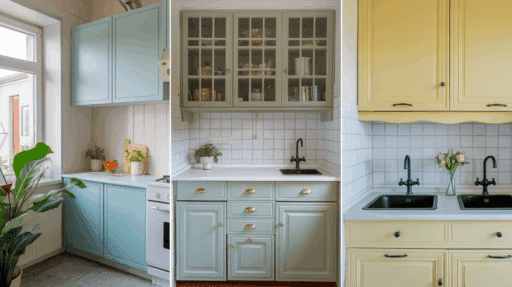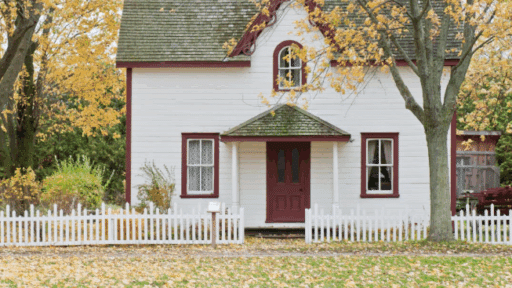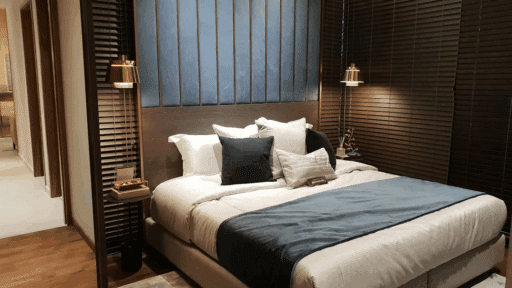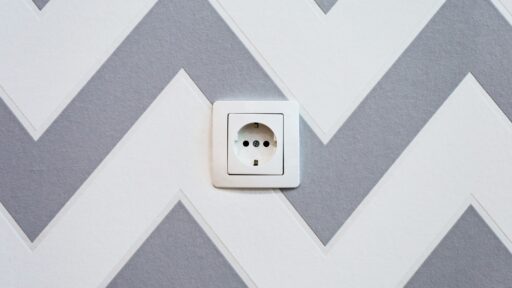Painting your kitchen cabinets is one of the easiest ways to update your home without a full remodel. But before you start budgeting or calling painters, it helps to know what the real costs look like.
Many homeowners are surprised to learn that painting cabinets can be far cheaper than replacing them, but it still comes with a wide price range.
In this guide, you’ll get a simple breakdown of what people actually pay, what affects the price, and how to decide if painting your cabinets is the right move for your budget.
Average Cost to Paint Kitchen Cabinets
The average cost to paint kitchen cabinets usually falls between $2,000 and $6,500 when hiring a professional. If you’re doing the work yourself, most DIY projects land around $200 to $600 for basic supplies.
This range gives a good starting point for most kitchens. It helps you understand whether painting fits your budget before you compare quotes or gather materials.
Professional Cabinet Painting Cost Breakdown
Professional cabinet painting costs can vary depending on how the painter charges. Most pros base their prices on the number of doors, drawers, or the size of your kitchen.
| Pricing Method | Typical Price Range |
|---|---|
| Per Cabinet Door | $70 – $150 each |
| Per Drawer Front | $30 – $90 each |
| Per Linear Foot | $25 – $60 per foot |
| Per Square Foot | $3 – $10 per sq ft |
| Full Kitchen Total | $2,000 – $6,500+ |
Your final price will depend on how your painter structures their quote.
DIY Kitchen Cabinet Painting Cost
DIY kitchen cabinet painting is one of the most affordable ways to update your space. Most homeowners spend around $200 to $600 on supplies like paint, primer, brushes, and sandpaper.
The total depends on what you already have at home and whether you choose to use a sprayer. Even with a small budget, DIY can still give your kitchen a big makeover.
What DIY Costs Usually Include:
- Primer and cabinet paint
- Brushes, rollers, or a basic sprayer
- Sandpaper or sanding sponges
- Painter’s tape and plastic sheets
- Cleaning supplies like degreaser or mild cleaner
DIY takes time and patience, but it’s a great option if you want to save money and don’t mind doing the work yourself.
Main Factors That Change Cabinet Painting Cost

The cost of painting kitchen cabinets can change a lot from one home to another. These key factors play the biggest role in how much you’ll end up spending.
1. Kitchen Size and Layout
The more doors, drawers, and corners you have, the more time and materials the job will require. A small straight-line kitchen is faster to paint than a large U-shaped layout with an island.
Extra panels, trim pieces, and shelving also add to the workload. Bigger layouts simply mean more hours, which increases the price.
2. Cabinet Material and Condition
Cabinets made of solid wood are usually easier to paint and hold paint better. Laminate or thermofoil cabinets may need extra prep or special products to help the paint stick.
If your cabinets have water damage, dents, or peeling finish, a pro will need to repair them before painting. All these extra steps raise the cost.
3. Paint Type and Finish
Higher-quality cabinet paint costs more, but it also lasts longer and looks smoother. Specialty finishes like satin, gloss, or enamel can require extra coats for full coverage.
Dark colors may also need more layers compared to light shades. The type of primer and topcoat you choose can also affect the final price.
4. Level of Prep Work
Prep work is where most of the time is spent. Cleaning, degreasing, sanding, filling cracks, and priming all take careful effort.
Older kitchens often need more prep to remove grease or smooth out worn areas. When prep takes longer, labor costs go up because painters must spend extra hours getting the surface ready.
5. Location and Painter Experience
Painters in big cities or high-cost areas often charge more than those in smaller towns. Experienced cabinet painters may also have higher rates because they deliver smoother, more durable results.
Their expertise can be worth the extra money, but it still increases the overall project cost.
Real-World Cost Examples and Simple Formulas
It can be hard to guess your exact cost without a proper quote, but a few quick formulas can help you get close. These examples make it easier to estimate your price before talking to a painter.
1. Per Door / Drawer Formula
One of the easiest ways to estimate cost is by counting your doors and drawers. Many painters charge by piece, so this method gives a quick ballpark.
How to estimate:
- Count all cabinet doors
- Count all drawer fronts
- Multiply by the painter’s average rate per piece
- Add a little extra for touch-ups or repairs
2. Using Linear Foot or Square Foot Pricing
Some painters charge by the size of your kitchen instead of the number of pieces. This method works well for simple layouts.
How to estimate:
- Measure the total length of your cabinets (linear feet)
- Multiply by the painter’s per-foot rate
- OR measure cabinet surface area and use a price per square foot
- Add extra if you have an island or tall pantry units
3. Small, Medium, and Large Kitchen Examples
These quick examples help you see where your kitchen might fit.
Typical ranges:
- Small Kitchen: usually on the lower end of pro pricing
- Medium Kitchen: often lands in the mid-range
- Large Kitchen: takes more time and materials, so cost goes up
- Custom Details or Extra Prep: may push the total higher
Painting vs. Refacing vs. Replacing Kitchen Cabinets
When updating your kitchen, you have three main options: painting, refacing, or replacing your cabinets. Each choice comes with different costs and results, so it helps to compare them side by side.
| Option | What It Is | Look & Style Change | Time Needed | Cost Range |
|---|---|---|---|---|
| Painting | Refreshing your current doors and frames with new paint | Light to moderate change | Fastest | $2,000 – $6,500 |
| Refacing | New doors + new veneer on cabinet boxes | Moderate to major change | Medium | $4,000 – $9,500 |
| Replacing | Completely new cabinet boxes and doors | Full transformation | Longest | $5,000 – $25,000+ |
Painting is usually the most budget-friendly way to refresh your kitchen. Refacing and replacing offer bigger changes, but they come with higher costs and longer project timelines.
When to Hire a Pro vs. Do It Yourself
Deciding whether to hire a pro or tackle your kitchen cabinets yourself comes down to your budget, time, and comfort level. Both options can work well – you just need to choose what fits your situation.
When DIY Makes Sense
DIY is a good choice if you’re handy, patient, and working with a smaller kitchen. It’s also great when you want to save money and don’t mind spending a few days on prep and painting. The results can still look great if you take your time.
Ways To Save With DIY:
- Borrow or rent tools instead of buying.
- Choose mid-range paint for good quality at a fair price.
- Use what you already own, like brushes or drop cloths.
When a Pro is Worth It
Hiring a pro makes sense when you want a smooth, long-lasting finish or have a big kitchen with detailed doors. Pros handle all the prep work, which saves you hours and reduces mistakes. This option costs more but gives consistent, professional results.
Ways To Save With A Pro:
- Get at least 2–3 quotes before choosing.
- Ask if you can handle small prep tasks to lower labor.
- Paint during slower seasons when rates may be lower.
Conclusion
Painting your kitchen cabinets is one of the easiest ways to refresh your space without taking on a full remodel.
Whether you hire a professional or choose the DIY route, the right approach can give your kitchen a clean, updated look at a price that fits your budget.
The key is knowing what to expect, understanding the costs, and choosing the option that works best for your time and skill level.
If you’re ready to move forward, start by gathering a few quotes or planning your DIY supplies. A little preparation can go a long way in creating a kitchen you’ll love.








